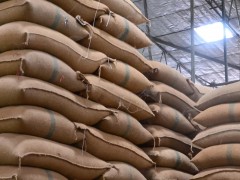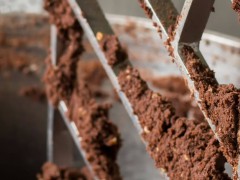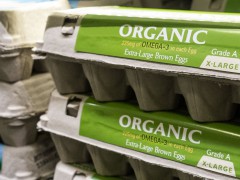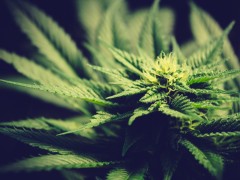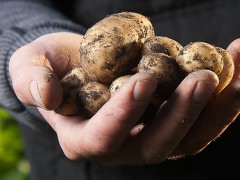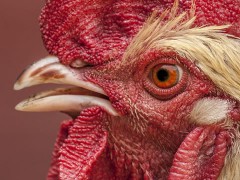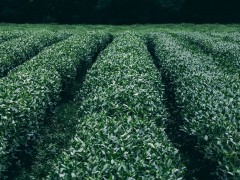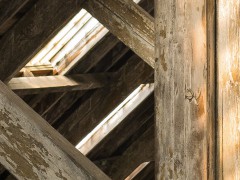In this part of the series, we take a close look at the evolution of the Michigan regulation which now threatens the production of heritage-breed hogs within the state.
Feral hogs have become a serious problem in some parts of the country. They destroy so many crops in Texas that it is now legal for citizens to shoot them on sight. With high-capacity magazines. From helicopters. Hey, at this point it’s not about the sportsmanship. It is about eradicating a legitimately destructive blight that humans have irresponsibly loosed upon the landscape.
To avert the helicopter gunship scenario, Michigan passed the Invasive Species Order in October of 2011 to prevent the proliferation of wild hogs within its borders. The Order prohibits the possession of Sus scrofa, or in other words “wild boar, wild hog, wild swine, feral pig, feral hog, feral swine, Old world swine, razorback, eurasian wild boar, and Russian wild boar”.
The members of the Michigan Animal Farmers Association asked the Department to clarify the Order by requesting to know precisely how the Department would identify prohibited animals. In its response the DNR made it clear they would make a determination of ferality based on the phenotypic characteristics of each animal. This is precisely where the rule metastasized to adversely affect the interests of the state’s heritage breed farmers. You can read the Order as well as the subsequent Declaratory Ruling in its entirety here, but let me sum it up in pertinent part:
“In its enforcement of the [Invasive Species Order], as amended, the Michigan Department of Natural Resources will use phenotype to identify Sus scrofa and distinguish it from other species.”
The order then went on to list 9 characteristics the Department would use to identify prohibited swine. These characteristics include;
- lightened bristle-tip coloration;
- dark point coloration on the extremities;
- coat colorations such as solid black, solid red/brown, black and white spotted, black and red/brown spotted;
- light colored underfur;
- a striped juvenile coat pattern;
- unspecified morphology skeletal appearance;
- straight tails;
- erect ear structure;
- and finally, the catchall – “other characteristics that are identified by the scientific community” that are indicators of ferality.
The jitters coming from the heritage breeders within the state are therefore entirely justifiable. Every heritage breed that is commercially raised exhibits one or more of these “feral” traits. Several of the prohibited characteristics are present in the purebred Mangalitsa for example, porcine royalty once served at the feasts of Habsburg princes.
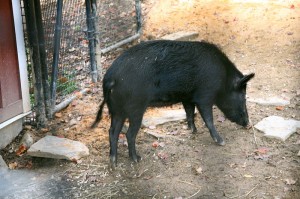 How would this regulation apply to the Ossabaw Island hog for example? It exhibits plenty of phenotypically “feral” characteristics even though it is produced commercially and is infamously coveted. The Ossabaw was intentionally dumped by Spanish settlers on Ossabaw Island off of the coast of Georgia in the 16th century, where it reproduced for centuries without human intervention. It became re-domesticated only very recently by some educational institutions and a few enterprising farmers. It is now a commercially viable breed once again, much sought after by the Big Chefs.
How would this regulation apply to the Ossabaw Island hog for example? It exhibits plenty of phenotypically “feral” characteristics even though it is produced commercially and is infamously coveted. The Ossabaw was intentionally dumped by Spanish settlers on Ossabaw Island off of the coast of Georgia in the 16th century, where it reproduced for centuries without human intervention. It became re-domesticated only very recently by some educational institutions and a few enterprising farmers. It is now a commercially viable breed once again, much sought after by the Big Chefs.
The plain meaning of the Order and its subsequent clarification would therefore allow the Department to morph a hog of the noblest, pedigreed heritage into a nuisance. Such animals could be destroyed by government decree based on the presence of an indefinite number of physical characteristics.
It thus appears the Department composed the list of feral characteristics with complete disregard for the qualities of heritage breeds of livestock, phenotypic or otherwise. The Order prohibits the precise qualities that make them such important parts of a diversifying food system.
If one were a cynic, it might appear that the Order and its progeny display a deliberate institutional bias favoring the boring, ubiquitous landrace hogs which compose our Smithfield ham and our Oscar Mayer bacon. At the very least, it demonstrates a bureaucratic arrogance towards Michigan’s innovative farmers that are using rare genetics to make a buck, distinguish themselves in the marketplace, and do something sustainable. Either way, small-scale farmers must now, as individuals, extricate themselves from the regulatory morass at a cost that must be born across their relatively microscopic herd sizes. Regulators who draft rulings like the DNR Order should either abandon their overt favoritism or consider the impact of their rules with the small-scale farmer in mind.
Mangalitsa growers are exceptionally well organized for a livestock breeding community, so they may not share the fate of other heritage breeds under the Order. Tomorrow, I’ll post about their unique response to the DNR Order and the versatility of their collective organization which helps them to share these types of expenses.


